
Welcome to The Regenerators.
Created in partnership with the RSPB.
Introduction
Have you ever wondered about the exciting world of the animals living in the green spaces around you?
Maybe you’ve seen the trees, bushes, flowers and grass, but have you thought about what might be living there?
With some simple techniques, you can discover and take a closer look at the many amazing creatures that depend on our green spaces.
Explore different habitats and learn how to collect, observe and record the minibeasts that live there. And you might even spot some other animals and birds too!
Top bug hunting tips!
Join Lucy Lapwing as she heads to her local green space on the hunt for some minibeasts.
Lucy: Hello, everyone. My name's Lucy, and today you're gonna be joining me on a bug hunt in my local green space.
Now, when you go for a walk down to your local green space you can see all different kinds of plants.
Whether they're huge trees like an oak tree, or a hedgerow, or a little bit of bramble and nettle and grass like this, there's all different types of places for mini beasts to live. So, what I'm gonna show you today are a few different techniques that you can use to help find creepy crawlies on a bug hunt.
So, let's go have a look. Now, the first technique we're gonna try is using this. This is a sweep net. It's a brilliant tool for hunting mini beasts. And you use it by dragging it back and forth, very slowly and smoothly, across vegetation.
And that scoops up all different types of creepy crawlies and mini beasts inside. And then you can stick your head in, have a look, and see what you've caught. Look at all that life.
We've got spiders, we've got leafhoppers, we've got bugs.
Look at this little green fellow down here. Now, a lot of creepy crawlies are quite fussy. They like damp places and they like dark places. So, a really good place to look for them is by gently turning over a log or a stone and see who's living underneath.
Now, if you're gonna turn over a log or a rock, it's important to be really gentle with any creepy crawlies you find underneath. So, I've got a couple of tools to help me with that. Number one is a paint brush, so you can gently use this to brush a bug into a pot, which is number two.
So this is a little glass jar that I'm hoping to put any bugs in that I find.
Now, this next bug-hunting technique is a really, really easy one to do. You only need one tool, and that is something white.
So, I've chosen a pillow case, but a bed sheet or a piece of paper or anything light in colour is all you need. That, and a tree or a bush, like this one. Now, let me show you what to do. Now, all you're gonna do is take your pillow case, and just spread it out nice and flat, whatever your white object is.
And make sure it's spread out underneath the tree. And the next thing you wanna do is take that tree or that bush that's above your sheet and give it a really good shake. And that'll loosen any mini beasts that are clinging onto the leaves and hiding in there, and we can have a good look at them.
This is the fun bit.
Here we go, have a look at that, we've got all sorts in there.
Little spiders and leafhoppers. Got us a little scurrying bug here.
So, there's a few nice-and-easy top bug-hunting tips using just a few simple items from home.
So, head out this weekend and have a go of a bug hunt all of your own.
Where should I look?
A habitatThe place where an organism lives. is the place or environment where a creature lives and calls home.

Grasses - Long grass is a great habitat for lots of different creatures which enjoy a sunny and dry environment. For example, spiders, ladybirds, flies and crickets.
Trees - A wide range of creatures live in the different parts of a tree, from the leaves to the bark. Oak trees can support over 200 insect species alone. Trees are home to creatures such as birds, moths, bees, snails, flies and many more.
Undergrowth - The ground is home to many creatures. Depending on how dark and damp the ground is or how dry and bright it is, different creatures will live there. You can usually find beetles who like to run along the ground.
Deadwood - Deadwood is a very important habitat and is usually found in woodlands. However, a tree log left in the undergrowth provides the same kind of habitat. Many creatures who like a dark and damp environment live in and under logs, for example woodlice, millipedes and slugs.
What can I use to help me?
Try these survey techniques to explore different habitats with respect and care. Remember, always make sure to return any creatures to the place you found them.

- Use a soft paintbrush to gently move creatures into viewing pots. Don’t do this with slugs and snails and don’t try to catch bees or wasps (they can sting to defend themselves). View butterflies from a distance, so that you don’t damage their wings.

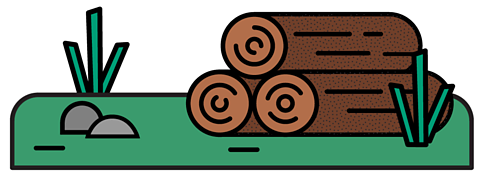
- Carefully turn over a log or stone to see if there are any creatures underneath. Remember to put them back how you found them.

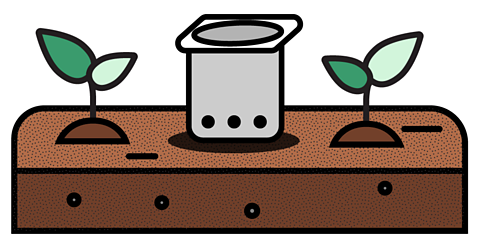
- Try making a pitfall trap. Place a yoghurt pot with holes in the bottom (done under adult supervision) into a small hole and add a couple of small stones. Check on the trap daily and remove once you’ve finished.

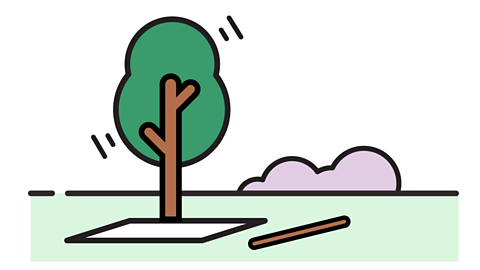
- Have a go at tree beating. Lay a white sheet under a tree or bush, close your eyes and gently shake a branch to see what falls out.

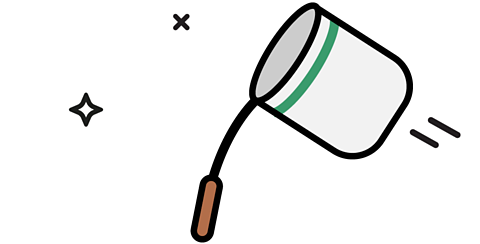
- Sweep nets are great for longer grass. Drag them smoothly and gently over vegetation to scoop up minibeasts.

How should I record what I find?
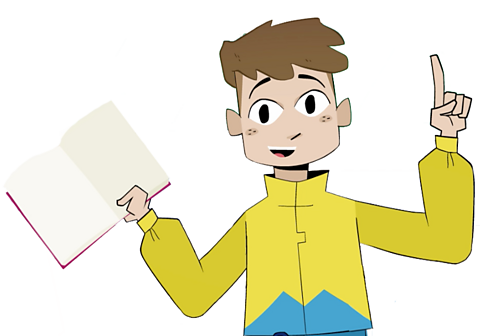
Using techniques to survey and explore nature around you is called fieldwork.
When doing fieldwork, you might want to learn more about what you see. Try to record what you find as you go along so you can investigate more afterwards.
Here are some suggestions to help you do this:
Create a table to record the types of creatures you find. If you spot a minibeast, how many legs does it have? What colour is it?
You might want to know which habitats had the most creatures, so you could make a tally chart to record how many creatures you find. Which habitats had the most? Why do you think this might be?
You could draw a picture of what you find. Labels can be helpful when you look back at your picture afterwards.
If you have a smartphone with you, you could take photos of what you find.

What might I find?
Here are some minibeasts you could find when you survey your local green space:
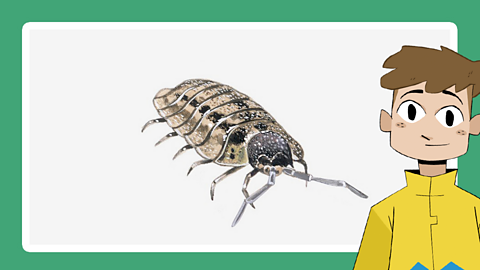
Image caption, Woodlouse
A woodlouse is usually grey in colour with a shell. It curls into a ball for protection when threatened. It has 14 legs.
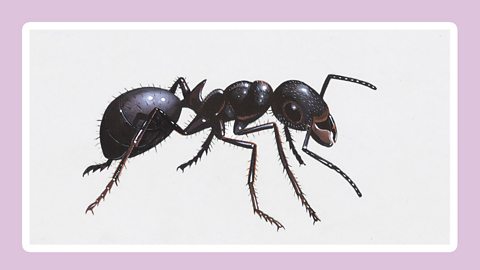
Image caption, Black ants
Black ants are usually black or brown in colour and live in large social groups. They have 6 legs and clearly defined body parts.
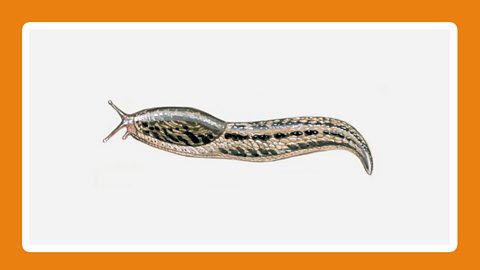
Image caption, Slug
There are many different types of slug and all of them look similar to a snail but without a shell. In dry or cold weather, they stay deep in the soil.
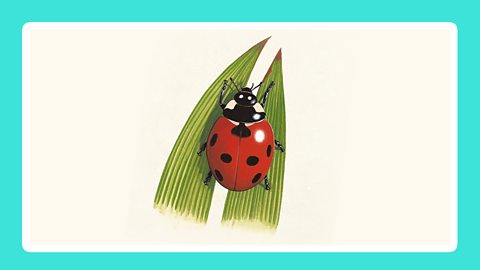
Image caption, Ladybird
Ladybirds are beetles that are easy to recognise. They are often red with black spots. They have 6 legs. There are several different types which are in a range of colours. They usually have a brightly spotted pattern.
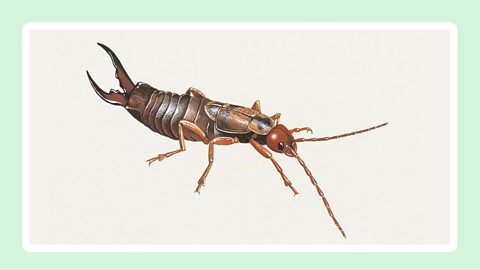
Image caption, Earwigs
Earwigs have 6 legs and are usually a glossy brown colour. They have pincers at the end of their bodies. There are only four types in the UK – and despite their name, they’re not interested in your ears!
1 of 5
Get hunting!
You're ready to go. You can use this interactive to learn about some of the creatures you might find. Now, get hunting. Good luck!
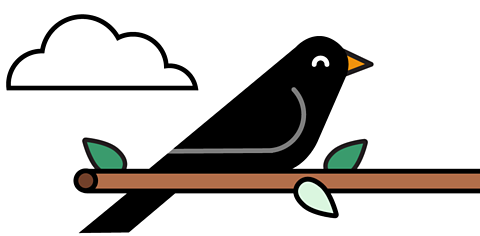
Wild Challenge
The RSPB’s Wild Challenge award has more activities to help you learn about and engage with nature. You can find out more on the RSPB website.

There's more to learn
Explore more lessons and content from around the BBC.
Which pollinators visit my garden?
GREEN CLASSROOM
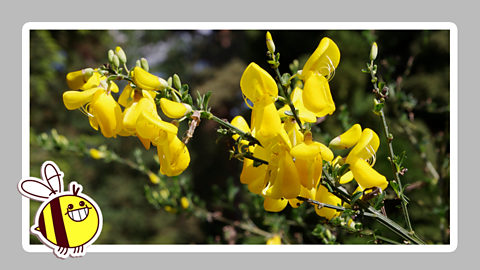
Where can you find symmetry in nature?
GREEN CLASSROOM
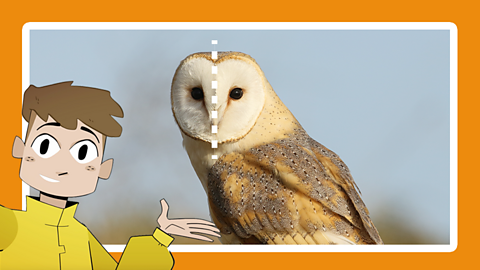
Year 3 - 6 and P4 - P7
GREEN CLASSROOM

More from The Regenerators
BBC BITESIZE
